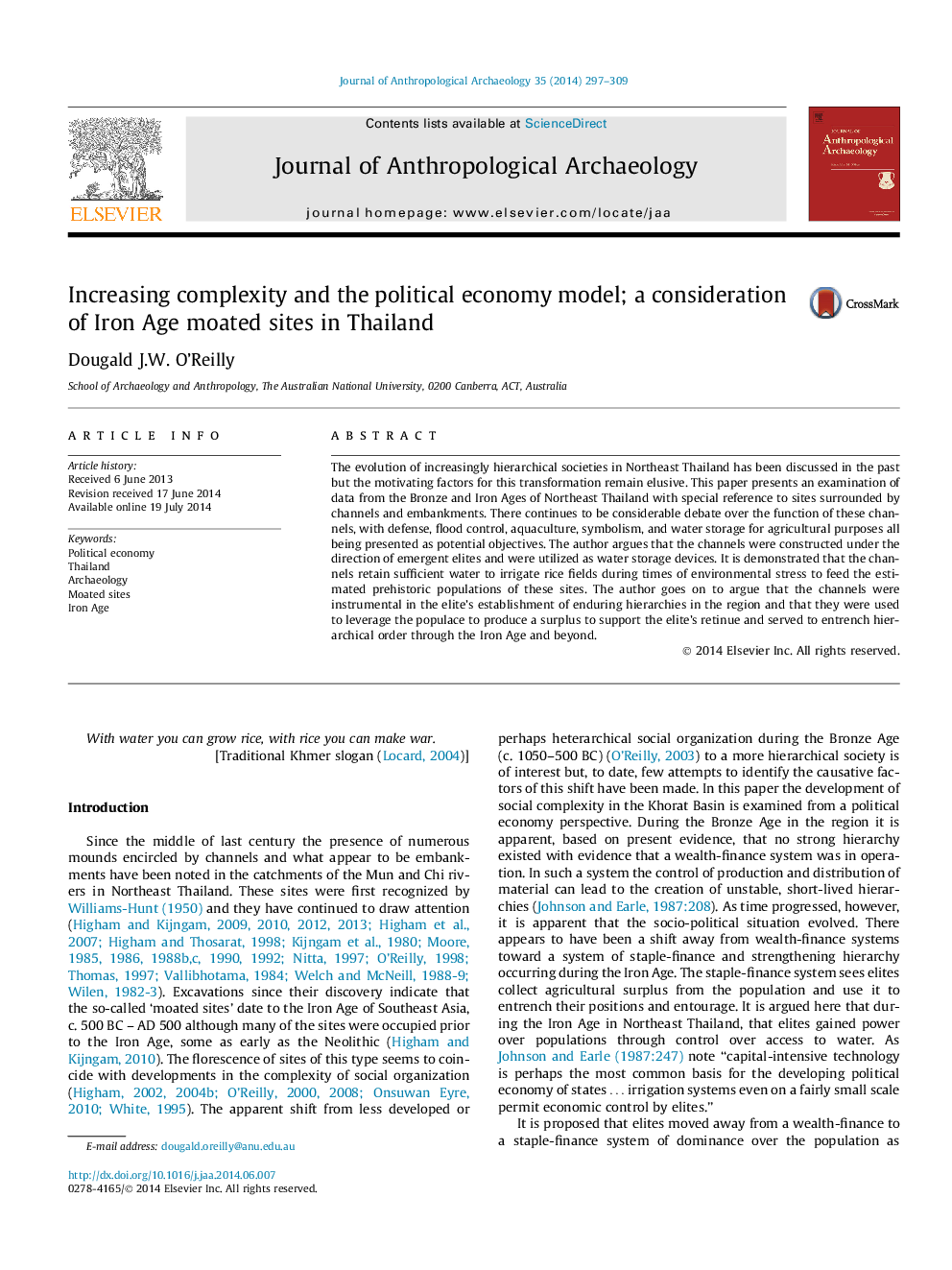| Article ID | Journal | Published Year | Pages | File Type |
|---|---|---|---|---|
| 1034972 | Journal of Anthropological Archaeology | 2014 | 13 Pages |
•Application of a political economy model to archaeological data from Khorat Basin Thailand.•Argued moats dug around sites in Iron Age (c. 500 BC – AD 500) were to store water.•Drought triggered a dependency on the elite who controlled the water in these moats.•Elite manipulated this debt to entrench their position of control eventually extending it to control of land.
The evolution of increasingly hierarchical societies in Northeast Thailand has been discussed in the past but the motivating factors for this transformation remain elusive. This paper presents an examination of data from the Bronze and Iron Ages of Northeast Thailand with special reference to sites surrounded by channels and embankments. There continues to be considerable debate over the function of these channels, with defense, flood control, aquaculture, symbolism, and water storage for agricultural purposes all being presented as potential objectives. The author argues that the channels were constructed under the direction of emergent elites and were utilized as water storage devices. It is demonstrated that the channels retain sufficient water to irrigate rice fields during times of environmental stress to feed the estimated prehistoric populations of these sites. The author goes on to argue that the channels were instrumental in the elite’s establishment of enduring hierarchies in the region and that they were used to leverage the populace to produce a surplus to support the elite’s retinue and served to entrench hierarchical order through the Iron Age and beyond.
